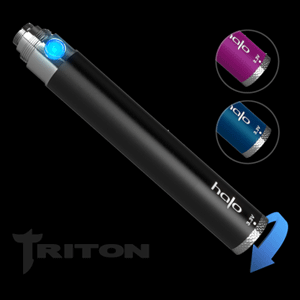
Researchers found that e-cigarettes operate at high voltages produce vapour with large amounts of formaldehyde-containing chemical compounds.
This could pose a risk to users who increase the voltage on their e-cigarette to increase the delivery of vaporized nicotine, said study co-author James Pankow, a professor of chemistry and civil and environmental engineering at Portland State University in Oregon.
"We've found there is a hidden form of formaldehyde in e-cigarette vapour that has not typically been measured. It's a chemical that contains formaldehyde in it, and that formaldehyde can be released after inhalation," Pankow said. "People shouldn't assume these e-cigarettes are completely safe."
The findings appear in a letter published 22 January 2015 in the New England Journal of Medicine.
Health experts have long known that formaldehyde and other toxic chemicals are present in cigarette smoke. Initially, e-cigarettes were hoped to be without such dangers because they lack fire to cause combustion and release toxic chemicals.
Read: The dangers of e-cigarettes
But newer versions of e-cigarettes can operate at very high temperatures, and that heat dramatically amps up the creation of formaldehyde-containing compounds, the study found.
"The new adjustable 'tank system' e-cigarettes allow users to really turn up the heat and deliver high amounts of vapour, or e-cigarette smoke," lead researcher David Peyton, a Portland State chemistry professor, said in the news release. Users open up the devices, put their own fluid in and adjust the operating temperature as they like, allowing them to greatly alter the vapour generated by the e-cigarette.
Read: The Brazilan blow-out is dangerous because of formaldehyde in the solution
When used at low voltage, e-cigarettes did not create any formaldehyde-releasing agents, the researchers found.
However, high-voltage use released enough formaldehyde-containing compounds to increase a person's lifetime risk of cancer five to 15 times higher than the risk caused by long-term smoking, the study said.
Formaldehyde is a known human carcinogen, according to the U.S. National Cancer Institute. It is a colourless, strong-smelling gas, commonly used in glues for products such as particle board, and in mortuaries as an embalming fluid.
Read: Big Tobacco has been asked to divulge what you're smoking
Counter arguments
The American Vaping Association, an industry group advocating for e-cigarette makers, argued that the new study was flawed because e-cigarette users wouldn't operate their devices at such high voltage.
"When the vapour device was used at the realistic setting of 3.7 volts, levels of formaldehyde were similar to the trace levels that are released from an FDA-approved [smoking-cessation] inhaler," association President Gregory Conley said. "However, when the researchers increased the voltage to 5 volts and continued to have their machine take three- to four-second puffs, this caused extreme overheating and the production of formaldehyde."
This is known "in vapour product science as the 'dry puff phenomenon,' " Conley said. "Contrary to the authors' mistaken belief, these are not settings that real-life vapers actually use, as dry puffs are harsh and unpleasant. In the real world, vapers avoid dry puffs by lowering the length of their puff as they increase voltage."
Read: Clive Bates, the former head of the United Kingdom’s largest anti-smoking charity, Action on Smoking & Health's scathing letter to the authors of the study (external link)
Noting that e-cigarettes remain unregulated, a representative with the American Cancer Society said these findings highlight the need for the U.S. Food and Drug Administration oversight.
"This study shows how little we know about toxic exposures that can result from using any one of the many different available types of e-cigarettes at different heating levels," said Eric Jacobs, the cancer society's strategic director of pharmacoepidemiology.
In April 2014, the FDA proposed federal restrictions that would bring e-cigarettes under the same regulation as tobacco. The proposed federal restrictions are still under review and no schedule has been set for adoption.
"Until these things are monitored and regulated, there's a real potential risk for unexpected exposure to toxic chemicals," Jacobs said. "We really don't know what kind of exposure the users might get when using any particular product at any particular heating level."
Read more:
Smoking parent equals carcinogens in kids
More Cancer-Causing Chemicals in U.S. Cigarettes
The link between e-cigarettes and respiratory illnesses




 Publications
Publications
 Partners
Partners










